It pleases me to stand in silence here*
The remarkable work of Mildred Holland and the angels of Huntingfield
We are blessed by angels in this little corner of East Anglia. So many of our medieval churches contain a host of heavenly beings gazing down from their hammerbeam eyries, but earlier this year, thanks to this Sunday post by India Knight, I made a new discovery.
The village of Huntingfield is not easy to find, although only a forty minute drive away, I was led down country lanes with no mention of it at all until suddenly it appeared on a fingerpost and there I was. St Mary’s The Virgin church is set back, half hidden by woodland, and is the perfect country church of knapped flint and brick, a perfectly ordinary church for this area, but what is inside is far from ordinary.
From 1859 to 1866, Mildred Holland, wife of the rector William, created a work of wonder: she singlehandedly painted the ceiling of the chancel and knave in the most glorious, dazzling colour with gilded angels reaching across the span and saints and martyrs depicted against extravagant pattern and decoration. It is a breathtaking, heavenly sight to behold.
But whilst the creation itself is extraordinary, it is the figure of Mildred that I find most compelling. There seems to be little known of her life prior to her marriage in 1835. William was bought the position of rector by his uncle, but had to wait for the existing incumbent to leave his post, and until that time came, he and his wife embarked on a grand tour of Europe, travelling from city to city, for eight years until finally he arrived in Suffolk to begin his new life. For him, his long awaited tenureship must have been a thrilling fresh chapter, but for his wife, for whom a new, much less stimulating, life lay ahead, it must have felt as though her world was closing in.
The duties of a village rector’s wife were far from onerous: visiting the sick, the poor and needy, running the household and assisting her husband in his clerical tasks, all of these in a small, rural community, were not likely to be fulfilling for a woman used to seeing the glories of European culture.
Perhaps the stultifying boredom, or the prospect of revivifying the post Reformation interior for the glory of God, led to her idea of decorating the church, but it is still an extraordinary thing to do, least of all for a woman whose role in the community was normally one of propriety and convention and for whom work of one’s own was out of the question. And where did she develop the skills to create such frescoes and gilding? We know she sought advice from the ecclesiastical architect Edward Lushington Blackburne, but no diary, letters or sketches for the ceiling remain. Indeed, there is no photograph of her ( although there is of her husband) and perhaps as the couple had no children, there was no one to preserve what remained of her life. Perhaps as a woman, it was not thought of as significant? When looking through directories of local churches from the period, the only reference I could find of her work was in Bryant’s “The Churches of East Suffolk” in this closing sentence: “The roof was richly painted by Mrs Holland, wife of the late rector.” Pevsner is slightly more fulsome in stating that she painted, “ gaily, ornately and correctly”, but it is faint praise.
William Holland, from a photograph in the church, with my ghostly reflection
She must, however, have been a force to be reckoned with: such a task would have taken monumental planning and organisation and would have required both endurance and physical strength. Can you imagine painting through cold winters, in an unheated church, in a Victorian garb of skirts and petticoats? We know that local tradespeople built wooden scaffolding and that a hammock was constructed to support her, but the tasks of designing, painting and gilding were solely hers.
And how on earth did she persuade her husband that not only did she possess such abilities but, that in order for the task to be performed, the church must be closed to his parishioners during its execution? One can only guess at the local brouhaha this caused. Much credit must therefore be given to William who, not only paid for much of the restoration, but must also have supported his wife fully in this venture, otherwise it would not have taken place. She must have been incredibly determined, and the creative impulse so pressing, that not pursuing it was inconceivable.
A novel, The Huntingfield Paintress, has been written about Mildred and while it is beautifully written and very credible, it is a reimagining of her life from the few facts we have, and I felt enormous frustration in not knowing how much of the writer’s account was true. Very little it would seem. Mildred remains an enigma, and her magnificent ceiling the only legacy of her talents and artistry.
She died at the relatively early age of 65. William survived her by thirteen years, marrying again three years after her death. There is an extravagant and elaborate font cover, along with a brass lectern, that he had made in her honour which reads:
Mildred Keyworth Holland, Husband, William Holland, Rector, this canopy is offered by her, devoted so much love and talent of God’s holy house to which she and to the greater enrichment, who fell asleep in 1878.
The font cover in memory of Mildred Holland
They lie together in graves, side by side, in the church yard. The inscription of her tomb is so worn now that it is illegible and so even these words no longer give a clue to her life.
The tombs of William and Mildred Holland (to the right),
The span of the knave and chancel created by Mildred Holland, every inch decorated
Something to read
David Gentlemen’s study in pen, ink and watercolour of St Mary’s, Huntingfield
A former resident of Huntingfield is the artist David Gentlemen who lived in a Suffolk longhouse just down the hill from the church. I have, of late, felt a little jaded by the landscape, as I always do in August, but after looking through the fluid and evocative sketches in his book “In the Country” I am itching again to go walking with my sketchbook. In this book he takes us on a tour of his home and his local patch beautifully describing in watercolour and pen and ink those small details that illuminate this quiet landscape.
Drawing is always a challenge. If drawing was easy, it would be boring. What I really like is that it is extremely interesting. It teaches you instantly how to look at something more in depth than anything else would make you look.
One learns not to be alarmed by what you’re doing but to get on with it and draw it and not mind if it’s any good or not. David Gentleman
Ann Kennedy Smith of Cambridge Ladies’ Dining Society has a book group in the offing beginning with “The Rector’s Daughter” by F.M. Mayor. I have been reading it alongside my research about Mildred Holland and it has poignantly thrown light on the limitations of the life of a daughter, or wife, in a nineteenth century rectory, and there are interesting parallels in the differences between talent being encouraged or thwarted. This is a book that is not to be missed.
Something to read and listen to
I used to teach the wonderful “Skellig”, by David Almond, to my Year 7 class and though I did so for several years, I never tired of it and always found something new to share on each reading. If you are unfamiliar with the story, it tells of a young boy Michael who discovers a strange being in his shed. It explores too the notion of the restrictions of classroom education, bringing in the subversive ideas of Blake, which, of course, they loved!
This Radio 3 documentary, “Alice at Crackpot Hall”, written and presented by David Almond, shares some of this magic and, as I write, I can still hear Alice’s infectious, gurgling laugh. It is an utter delight. He also talks about his creative process in his walk in “Ramblings” which is another treat.
And to end…
A reading of Larkin’s * “Church Going " by Timothy Bentinck. I can also highly recommend Henry Oliver’s, of The Common Reader piece on Larkin here.
A tombstone in the churchyard whose inscription reduced me to fits of giggles…
Thank you very much for your company and for supporting my work here, it makes a huge difference to me. If you liked this post, please press the “Heart” as it helps my work to be seen by non- subscribers. While my posts remain free, my paid subscription is open and as a small thank you, I am offering one of my original linoprints to all who take out an annual subscription, wherever you are. Subscribers also receive 20% off all purchases in my website shop.
I look forward to seeing you again in a couple of weeks!

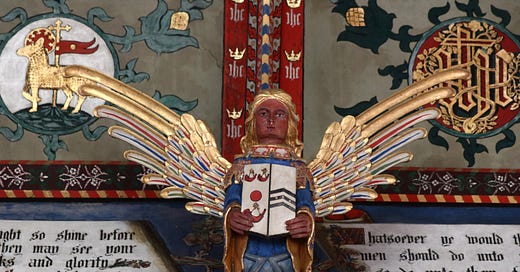



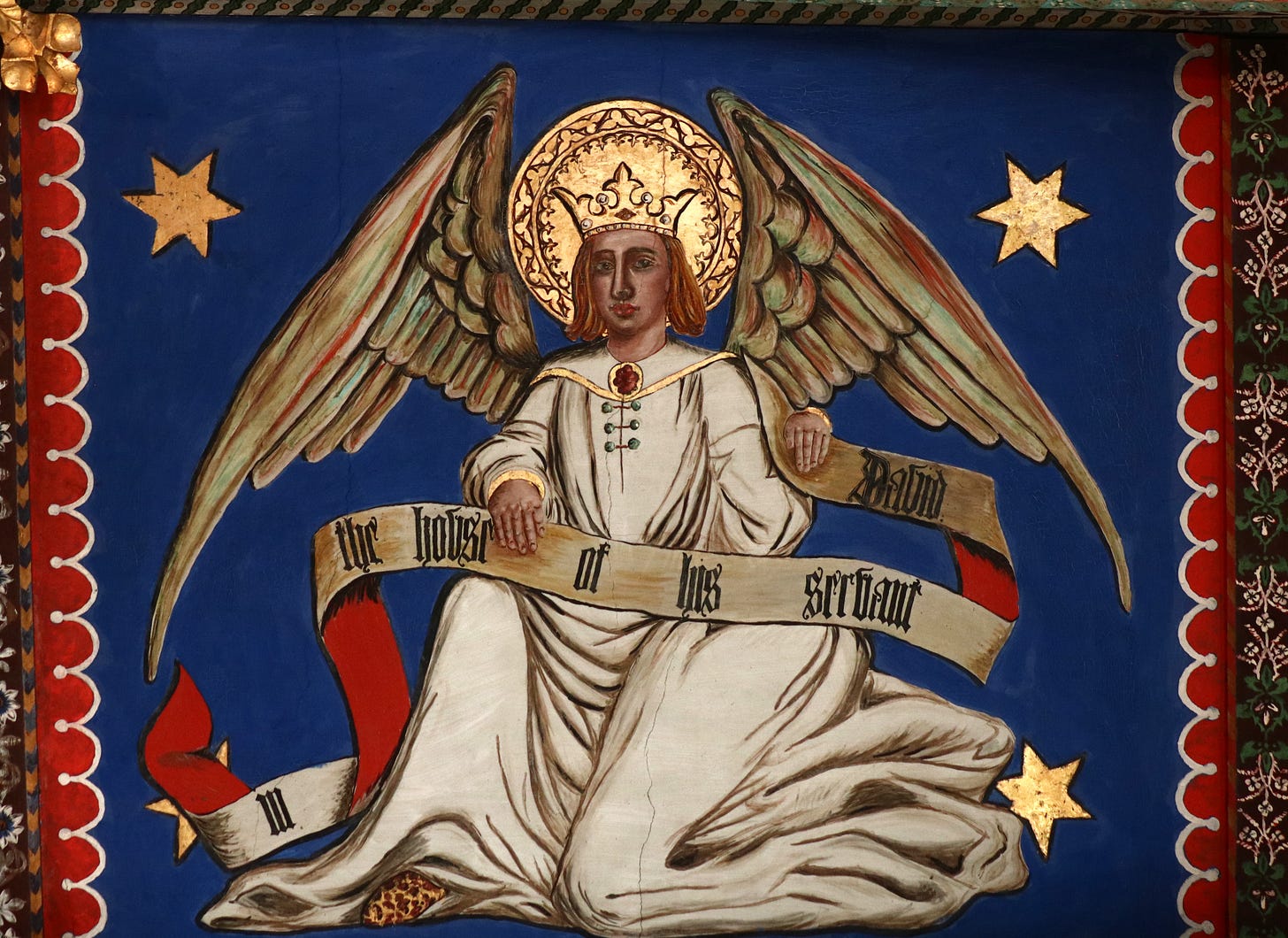

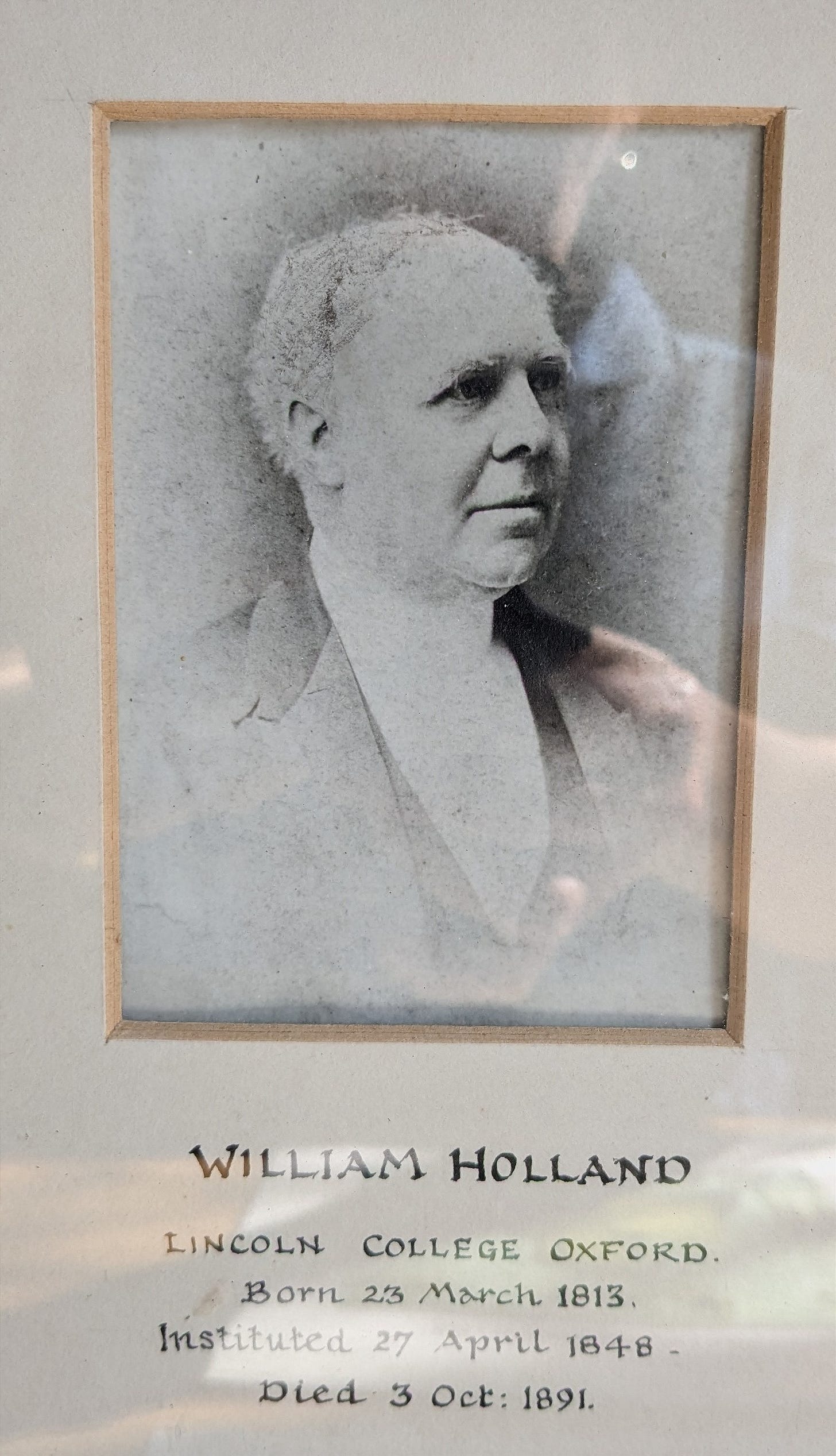
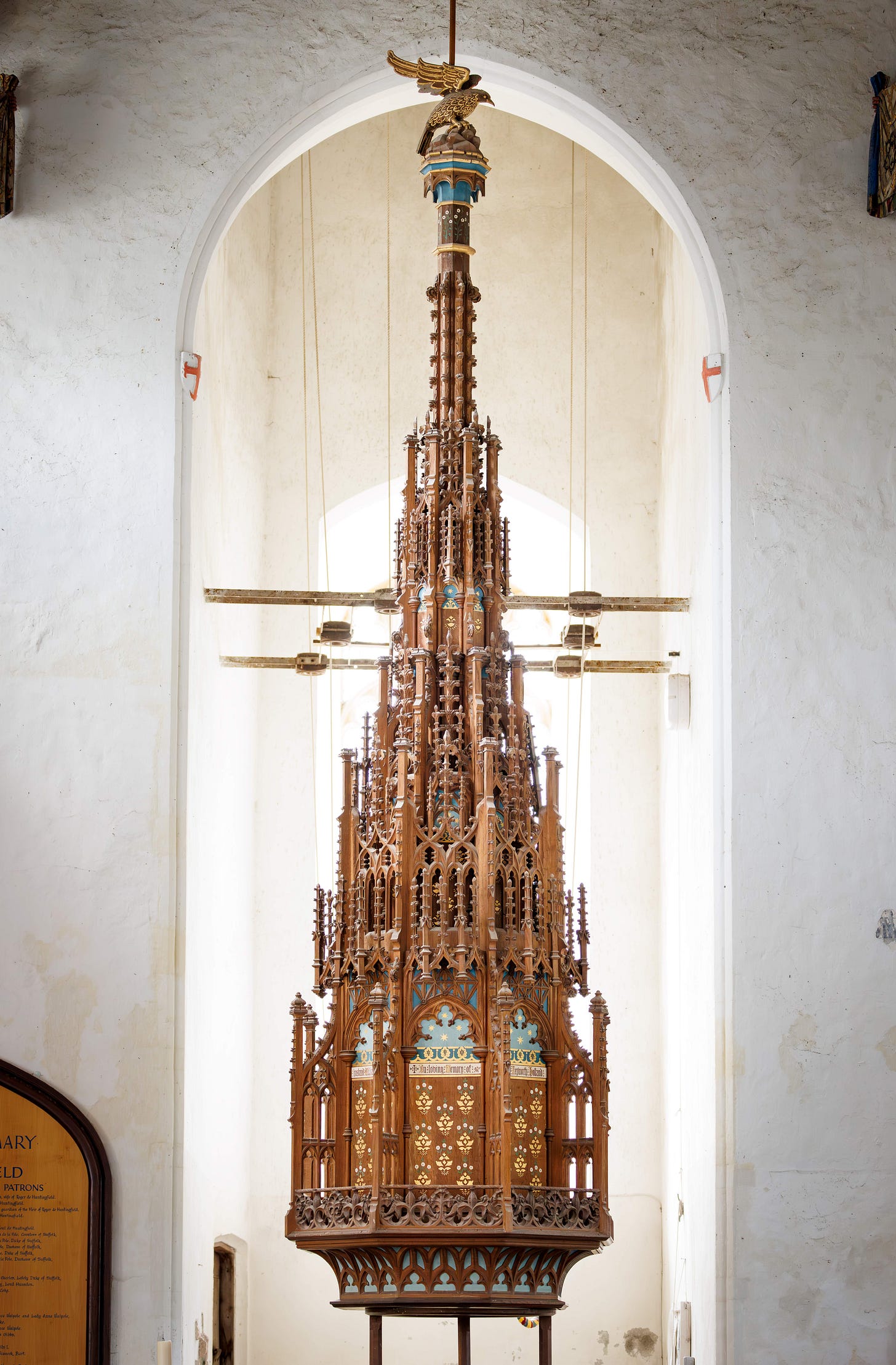
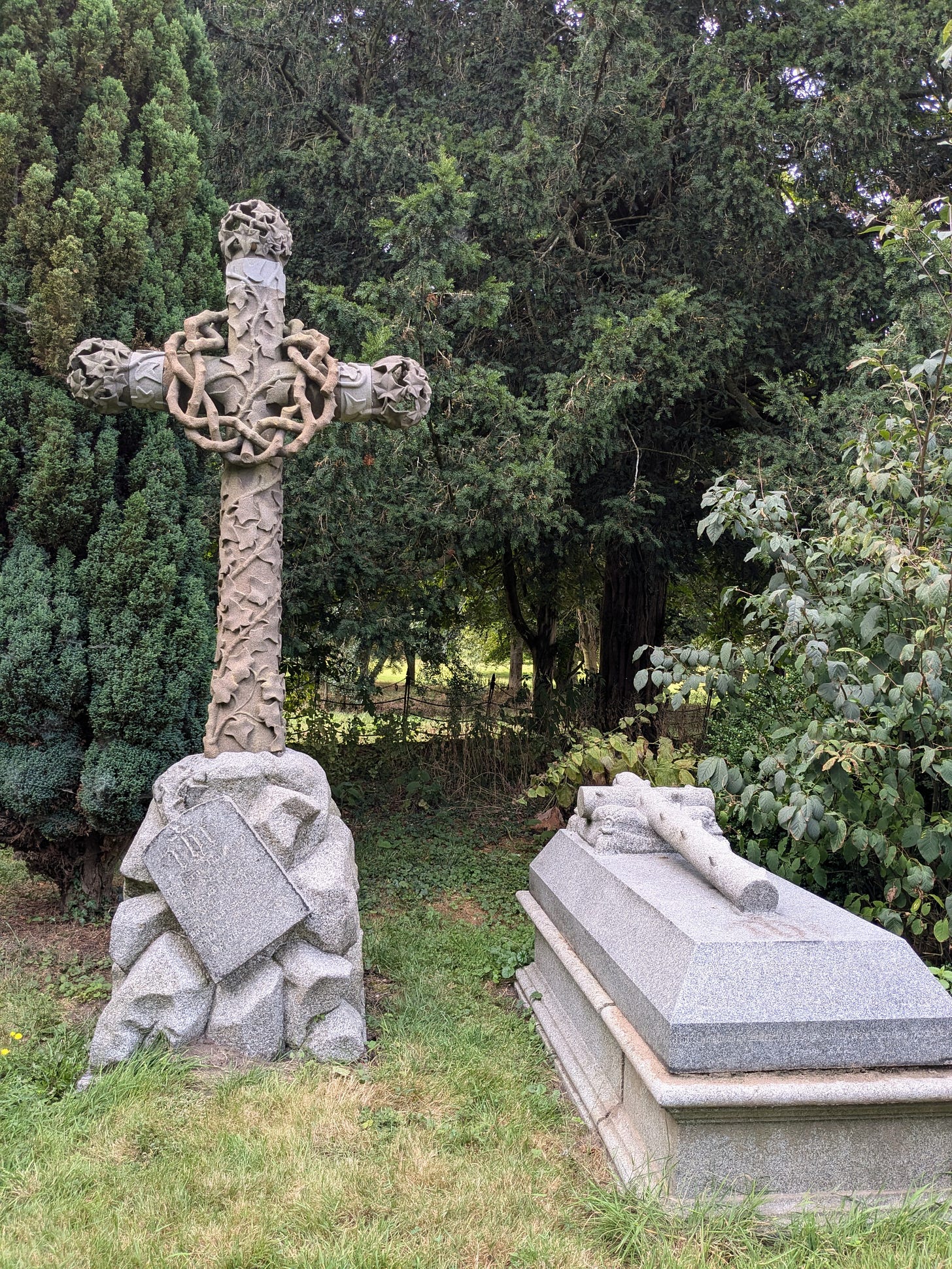
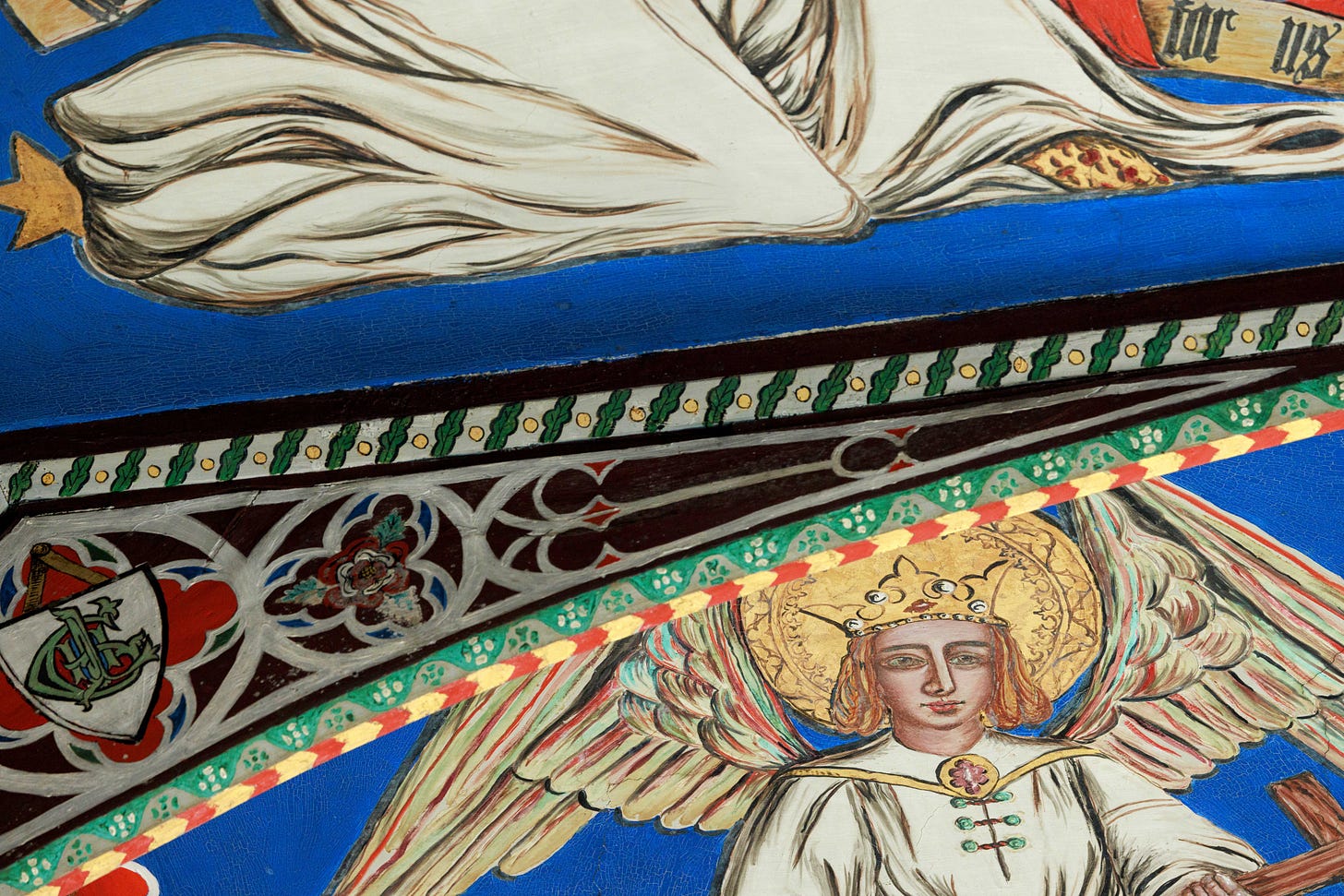
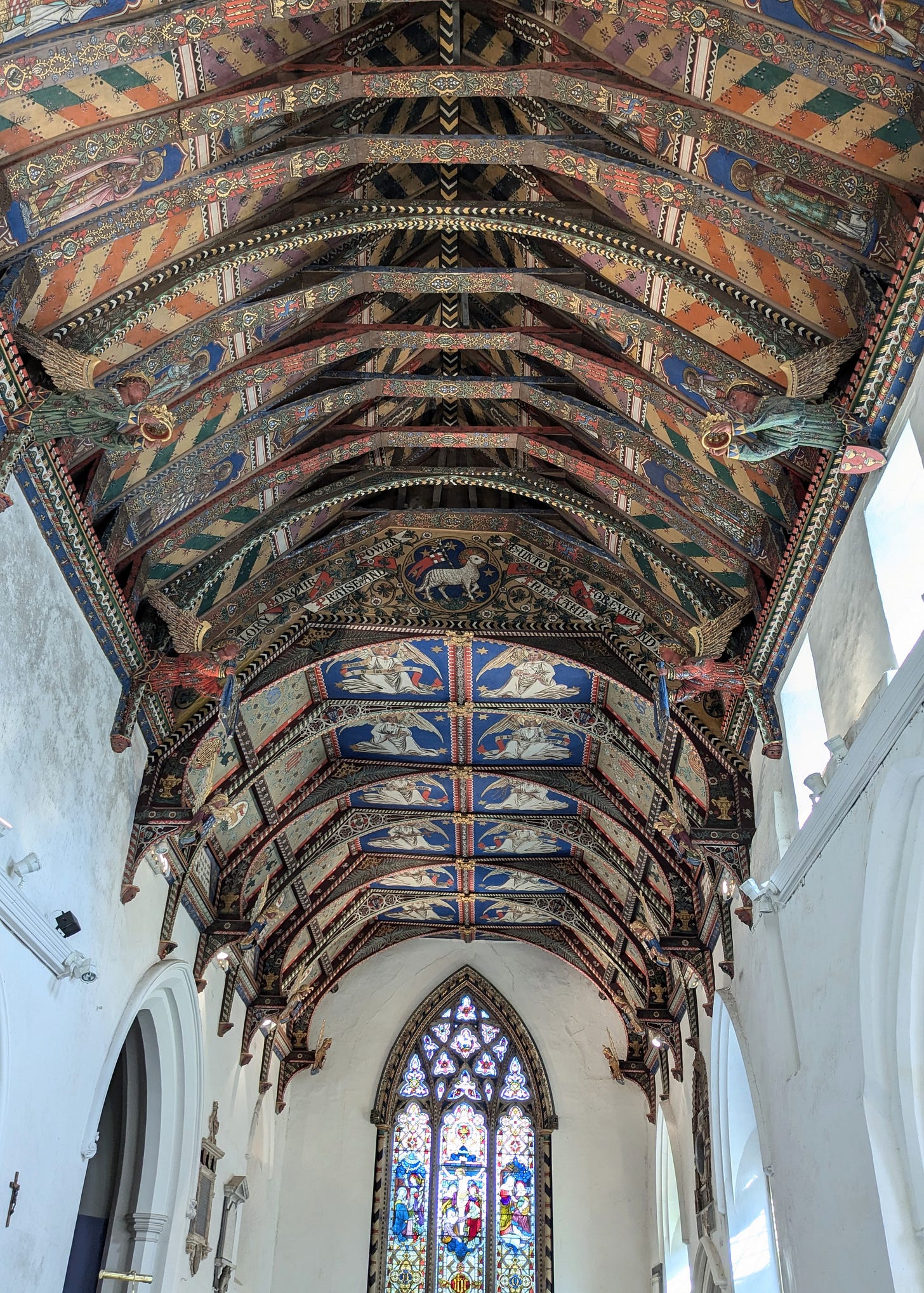
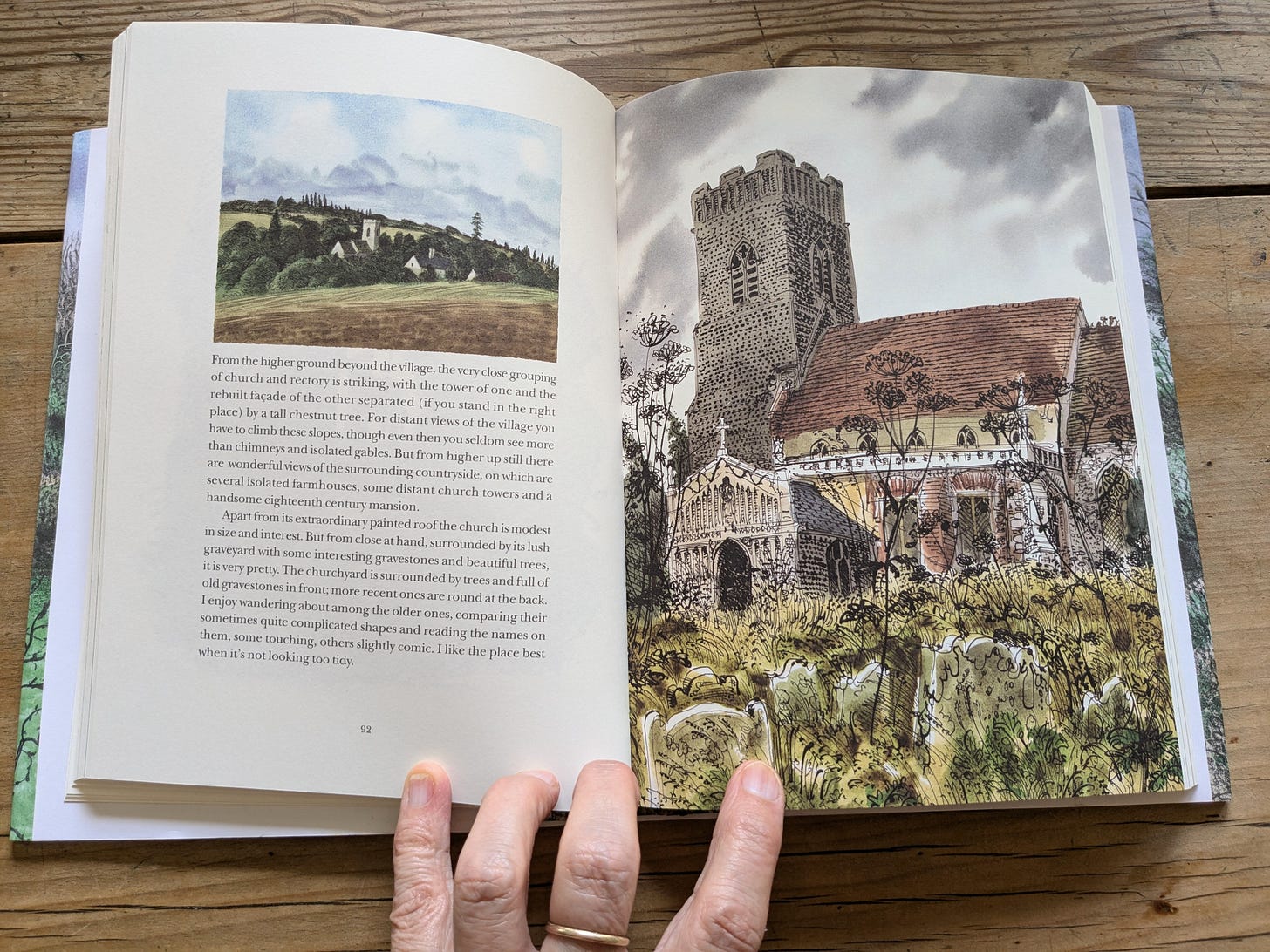
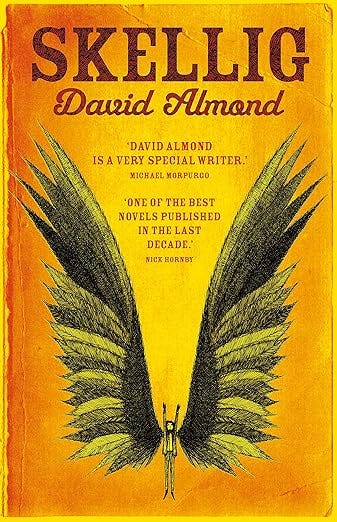
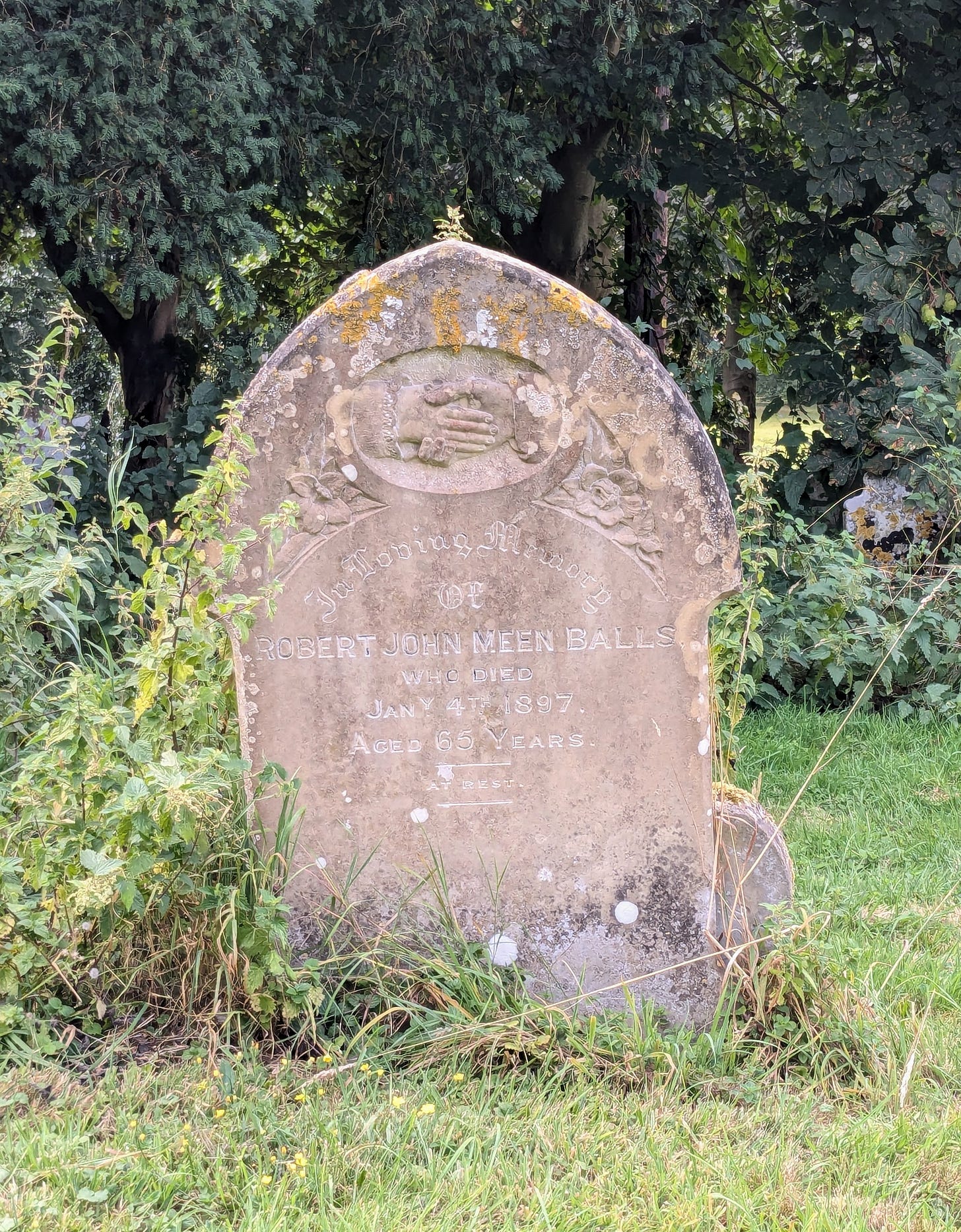
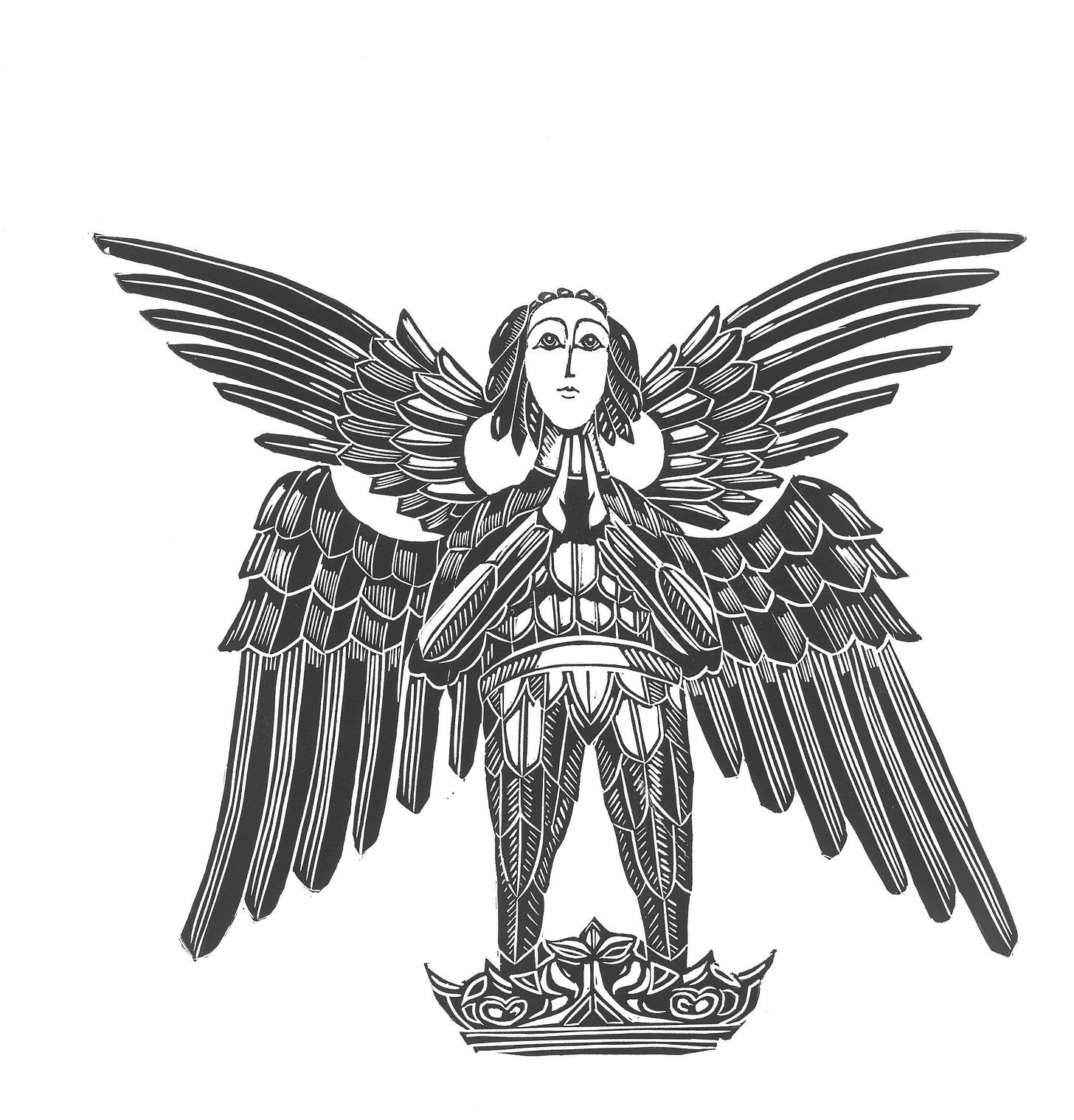
What a fascinating account of an amazing woman. Thank you, yet again, for such an interesting glimpse into the life of someone else I hadn't heard of! As I was reading the first part of this I was visualising a really small church - and to see that vast expanse of painting in your later photo was a shock! Thought-provoking too, to read of a woman overcoming obstacles to fulfil her passion for art with determination, and what must have been a high degree of belief in the value of what she was setting out to do. x
What an amazing church and such an incredible achievement. Despite living in Suffolk I didn't know about this church or or the woman who decorated it. Thank you for the article, it was a really interesting read.